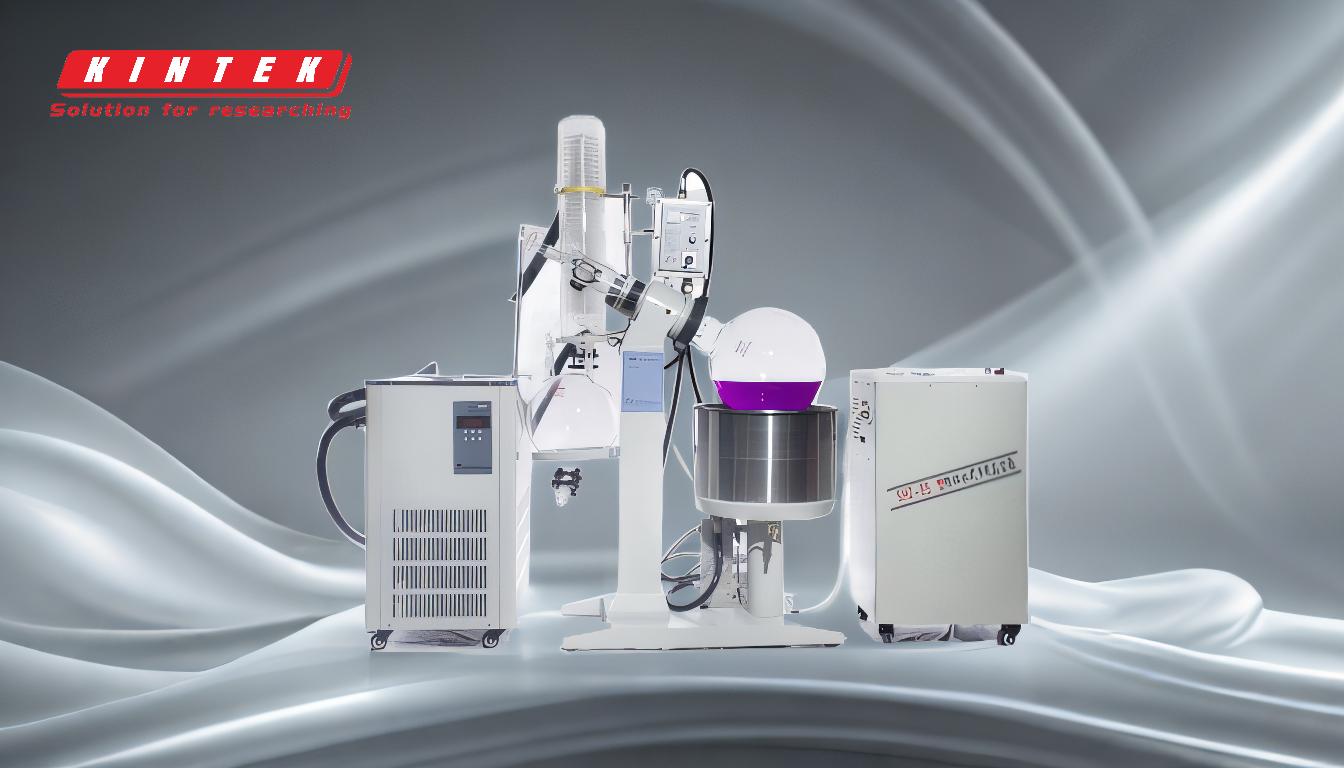If cooling water is not run through the condenser when using a rotary evaporator, several critical issues can arise. The condenser's primary function is to cool and condense vaporized solvents back into liquid form, ensuring efficient separation and recovery. Without proper cooling, the condenser cannot perform this function, leading to vapor escaping into the vacuum pump, solvent loss, contamination, and potential damage to equipment. Additionally, the lack of cooling can cause overheating, bumping, or even violent reactions, posing significant safety risks such as burns, chemical exposure, or equipment failure. Proper cooling is essential to maintain the integrity of the process, protect sensitive materials, and ensure user safety.
Key Points Explained:

-
Condenser Overloading and Solvent Loss:
- The condenser is designed to cool vaporized solvents, converting them back into liquid form for collection.
- Without cooling water, the condenser cannot effectively condense the solvent vapors.
- This leads to vapor passing through the condenser and entering the vacuum pump, reducing efficiency and potentially damaging the pump.
- Solvents like ethanol, which have lower boiling points, are particularly prone to escaping the system, leading to significant solvent loss.
-
Contamination of Distillate:
- Uncondensed vapors can contaminate the distillate, compromising the purity of the recovered solvent or compound.
- This contamination may require additional time and resources for cleaning and sample recovery, reducing overall process efficiency.
-
Overheating and Thermal Decomposition:
- Without cooling, the system can overheat, especially if the water bath temperature is high.
- Overheating can cause thermal decomposition of heat-sensitive compounds, such as cannabis extracts, leading to degradation of the desired product.
- This is particularly critical for materials that require precise temperature control to maintain their integrity.
-
Bumping and Foaming:
- The absence of cooling can lead to uneven evaporation, causing bumping (sudden boiling) or foaming.
- Bumping can result in splashing of the sample into the condenser or vacuum line, leading to contamination or equipment damage.
- Foaming can exacerbate these issues, making the process unpredictable and hazardous.
-
Safety Risks:
- Overheating and bumping increase the risk of glassware breakage, which can cause burns or chemical exposure.
- Escaping vapors may also pose inhalation hazards, especially if the solvent is toxic or flammable.
- The lack of cooling can exacerbate the risks associated with reactive materials, potentially leading to violent reactions under vacuum conditions.
-
Damage to Equipment:
- Vapors entering the vacuum pump can damage its internal components, reducing its lifespan and requiring costly repairs or replacements.
- Overheating can also damage the rotary evaporator's heating element or other components, leading to equipment failure.
-
Process Inefficiency:
- Without proper cooling, the evaporation process becomes less efficient, requiring longer processing times to achieve the desired results.
- This inefficiency can be particularly problematic in high-throughput or time-sensitive applications.
-
Preventive Measures:
- Always ensure that cooling water is running through the condenser before starting the evaporation process.
- Use a chiller if necessary to maintain adequate cooling capacity, especially for solvents with low boiling points or heat-sensitive materials.
- Monitor the system regularly to ensure that the condenser is functioning correctly and that no vapors are escaping.
In summary, neglecting to run cooling water through the condenser in a rotary evaporator can lead to a cascade of issues, including solvent loss, contamination, equipment damage, and significant safety hazards. Proper cooling is essential to maintain the efficiency, safety, and integrity of the rotary evaporation process.
Summary Table:
| Issue | Consequence |
|---|---|
| Condenser Overloading | Solvent vapors escape, reducing efficiency and potentially damaging the pump. |
| Contamination of Distillate | Uncondensed vapors compromise purity, requiring additional cleaning. |
| Overheating | Thermal decomposition of heat-sensitive compounds, degrading product quality. |
| Bumping and Foaming | Uneven evaporation causes splashing, contamination, or equipment damage. |
| Safety Risks | Risk of burns, chemical exposure, or violent reactions due to overheating. |
| Equipment Damage | Vapors damage vacuum pumps or heating elements, leading to costly repairs. |
| Process Inefficiency | Longer processing times and reduced throughput due to improper cooling. |
| Preventive Measures | Use cooling water or a chiller, and monitor the system to ensure proper function. |
Ensure your rotary evaporator operates safely and efficiently—contact our experts today for guidance!











